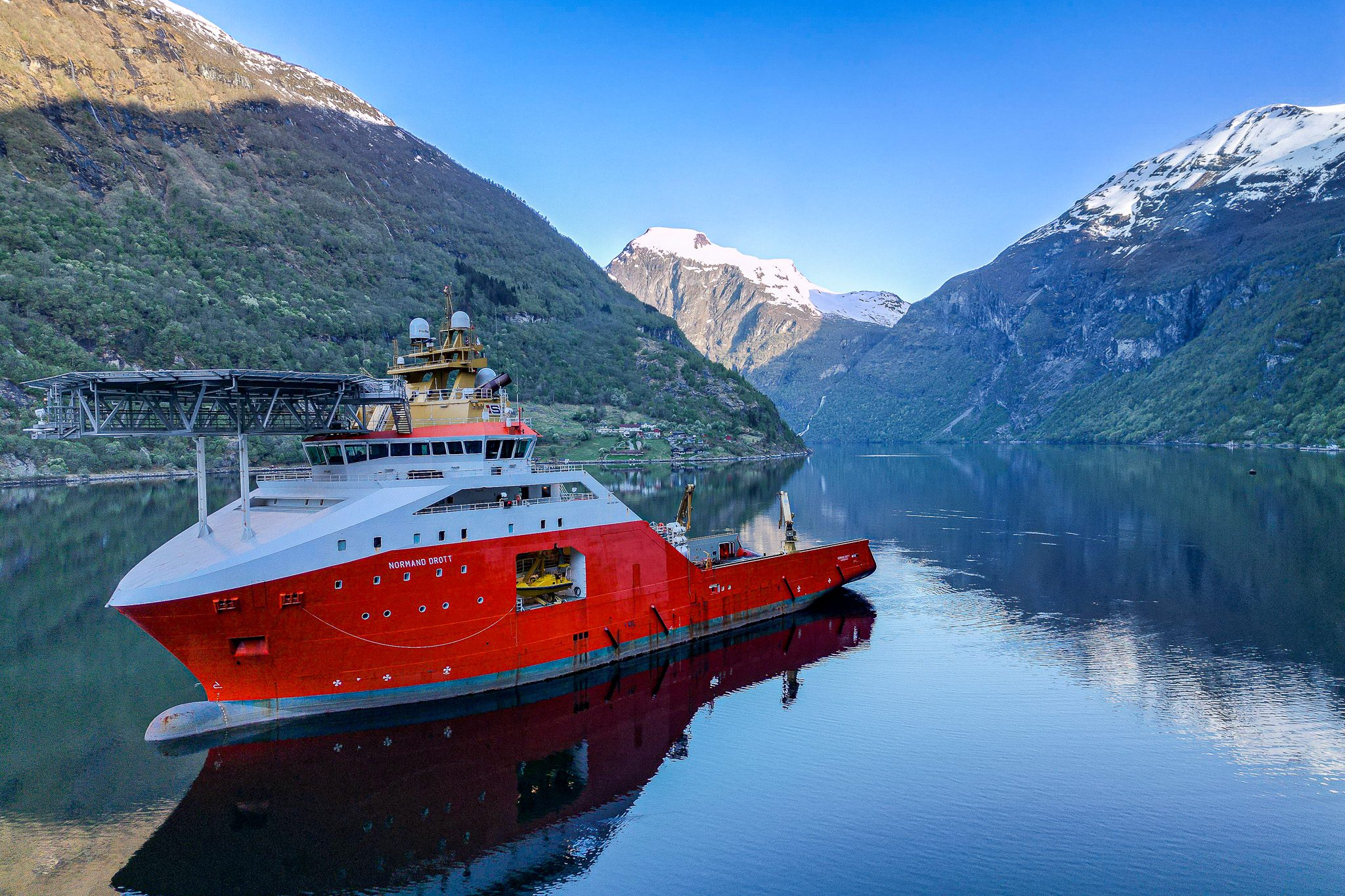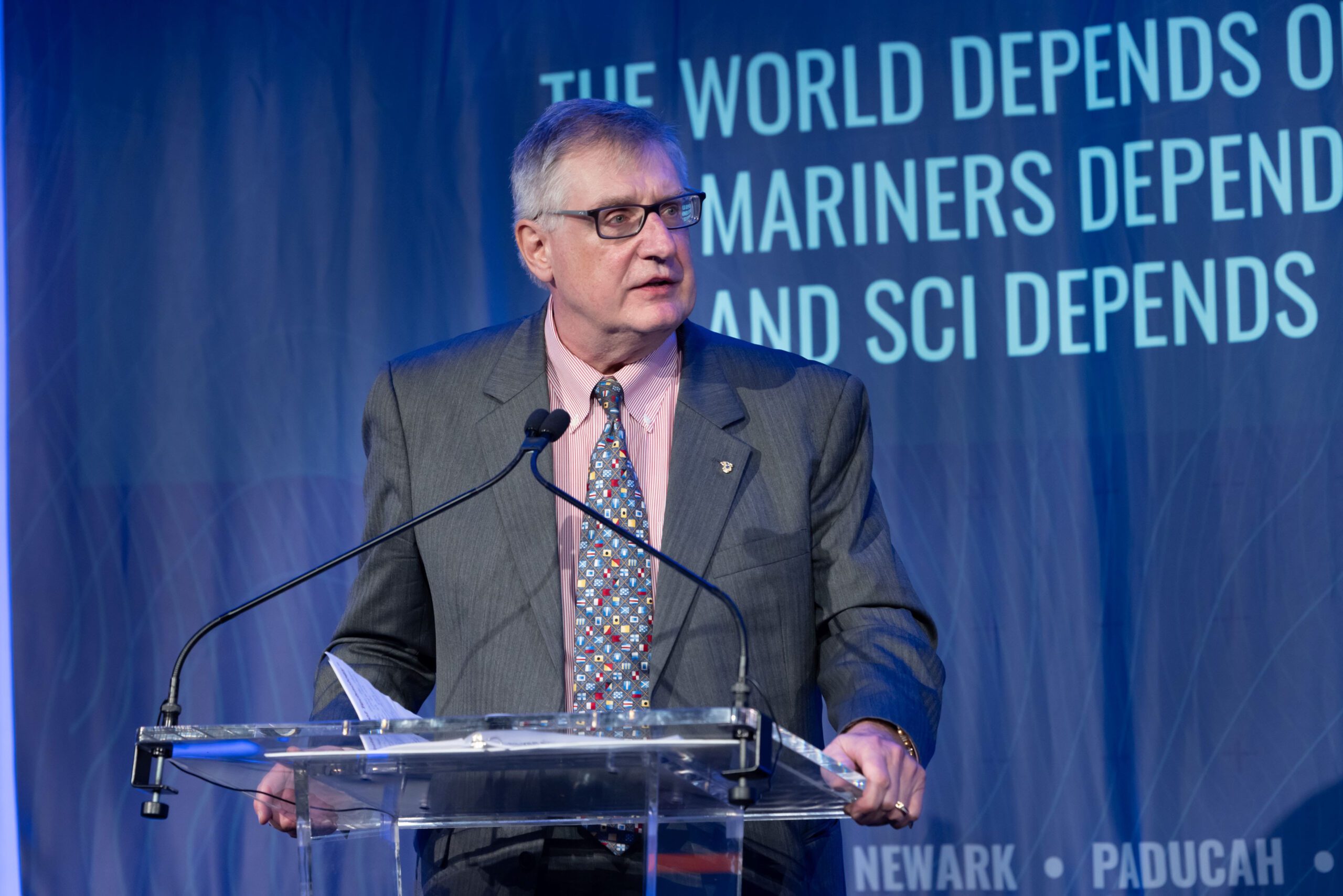Restech pneumatic line throwers use compressed gas instead of explosives, making them safer, more precise, and more cost effective than their pyrotechnic counterparts.
Pyrotechnic, or rocket-propelled, line throwers have existed in maritime for centuries and remain a common feature in the industry today, but there are good reasons why users have pushed for a practical alternative.
According to Petter M. Olsen, Chief Marketing Officer, Restech Norway, development of the pneumatic line thrower (PLT®) began when a sea captain requested a solution that was free of explosives, reusable, and robust enough for deployment in rough weather.
“Restech Norway was established to make this vision a reality,” he says, as the company celebrates the 45th anniversary of its pneumatic system. “The PLT® has since become a fixture in the maritime and offshore markets thanks to its superior safety and practicality,” adds Olsen.
Using compressed air to launch projectiles, the PLT® works without explosives or gunpowder, meaning it is safer to store and deploy than pyrotechnic systems.
The International Maritime Organization (IMO)’s International Convention for Safety of Life at Sea (Solas) covering the carriage of life-saving appliances (LSAs) includes a requirement for line-throwing apparatus (LTA) on board vessels. It applies to vessels of 500 gross tonnage and above or with capacity for more than 12 people.
Providing “more specific technical requirements for the manufacturing, testing, maintenance, and record keeping” of LSAs, the Convention’s LSA Code for rescue lays out the accuracy, reach, and strength needed by the LTA, while storage requirements reflect the use of pyrotechnic types.
Lower-risk PLT®
“There are obvious safety risks associated with the storage and use of pyrotechnics on board a vessel, and in certain situations, these risks are exacerbated,” notes Olsen, who points to the example of a tanker, where pyrotechnics pose a fire or explosion hazard and complicate rescue operations. “Even if the stricken vessel is not a tanker, gas may be present in a distress situation due to a fire, in which case, using pyrotechnics would be extremely dangerous.”
Outside of rescue operations, LTA are used for bunkering and ship-to-ship transfer in the offshore oil and gas sector, and in this case, pneumatic systems are now mandatory, Olsen explains. This is not only for reasons of safety, he says, but also due to accuracy.
“In offshore locations such as the North Sea, pyrotechnic LTA have been shown to lack precision,” he says. “Being self-propelled, the projectiles are easily pushed off course by wind, whereas projectiles propelled by compressed air are less susceptible to the effects of weather, making them considerably more accurate. In fact, studies demonstrate that the PLT® can repeat a shot within five to eight metres of a target up to 240 metres away in a strong crosswind.”
Another application for the PLT® is to help large vessels moor safely and efficiently in rough conditions. “A rocket-propelled projectile is designed to fly 450 metres, so when it reaches port at a shorter distance, it will continue to fly around until it burns out,” comments Olsen. “This is a clear safety risk and one reason the PLT® has found favour with container and cruise ships, whose size makes mooring in high winds a challenge.”
Sustainable reuse
Cruise lines are also opting for the PLT® for environmental reasons, with Costa Cruises a notable example. Olsen explains that, under local regulations, crew on board Italian-flagged vessels have to practise with LTA biannually – and having previously used pyrotechnics, Costa noticed that small pieces of plastic were falling into the sea whenever a projectile was launched. The company decided to switch to the PLT®, which contains no loose components and therefore has no negative impact on the marine environment.
“Every time a pyrotechnic LTA is used or expires, it has to be replaced, creating waste, causing lifecycle costs to mount up, and making training and testing impractical,” continues Olsen. “The PLT® is reusable, meaning it can be tested and trained with as often as needed. Furthermore, whereas rocket-propelled systems have to be replaced every three years even if unused, the PLT® has no expiry date. Over the course of a cruise ship’s lifespan, which can exceed 40 years, the payback on pneumatic LTA compared to pyrotechnic versions is enormous.”
In addition, since pneumatic systems are not classed as dangerous goods, no special provisions are required for their transport. Shipping pyrotechnics, conversely, requires permits and specially adapted storage solutions, which delays delivery and adds to total cost of ownership.
“Disposal presents a further headache for users of pyrotechnic systems,” says Olsen. “As dangerous goods, pyrotechnics need to be taken to special disposal sites. However, these are few and far between, which can mean keeping unstable explosives on board for extended periods. Manufacturers may offer a disposal service, but again, this just adds to cost.”
Restech originals
The advantages of the PLT® over pyrotechnic LTA are significant and numerous, but Olsen stresses that Restech’s system is not the only pneumatic option on the market. “Other brands are available,” he says. “What sets Restech apart is that we are the inventor of the original system. As such, we possess unparalleled experience in its development, application, and testing. This is a life-saving technology, so there can be no compromise on quality.”
Restech’s product portfolio caters to a range of requirements based on the type and size of the vessel and the operations it undertakes.
For vessels under 500 GT or with capacity for fewer than 12 people, Restech offers a small, lightweight LTA: PLT® Mini. With a launching distance of 30–100 m depending on the line and projectile used, PLT® Mini is commonly deployed in both work and rescue operations.
PLT® Solas, meanwhile, is a low-cost solution designed exclusively to support compliance with the LSA Code. In accordance with regulations, it comes equipped with four projectiles, achieves a launching distance of 230–250 m, and has a line breaking strength of 2,000 Newtons.
Restech’s best-selling system, PLT® Multi, is centred on the PLT® Launching Unit, which comprises three launching tubes and allows operators to select from a toolbox of nine projectiles. With PLT® Multi, users can comply with Solas rules while addressing more specific launching requirements for line transfer, mooring operations, back-up for towing, and life buoys, for example.
Reflecting on the regulatory landscape around LTA, Olsen calls for the rules to be updated to shift the focus from only pyrotechnic to include other technologies like pneumatic systems and make regular training mandatory: “It’s a matter of addressing the weak link in rescue operations. Every other piece of life-saving equipment may be optimal, but if you can’t transfer a line because of safety concerns, a lack of precision, or insufficient training, the entire operation will be compromised,” he concludes.
Tags:

 Join The Club
Join The Club











